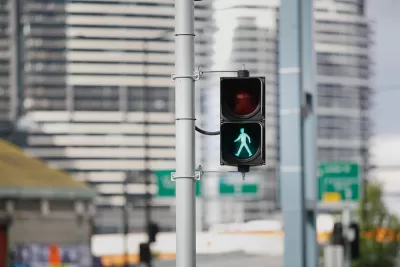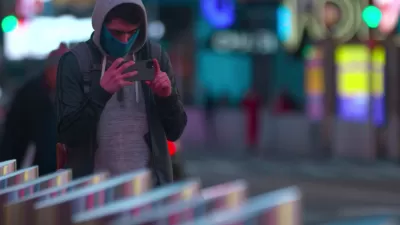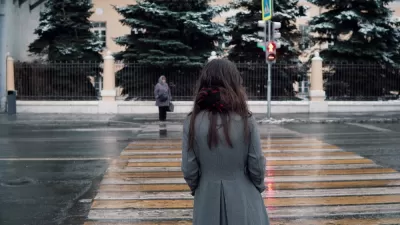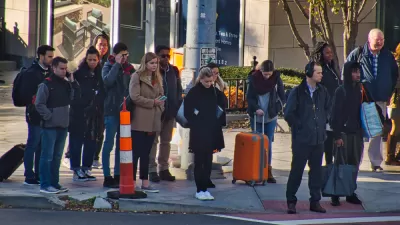The consequences of historic redlining continue to have consequences in the present day United States. Add another example to the list.

A study recently published by the American Journal of Public Health connects the discriminatory real estate practices of U.S. history to the poor pedestrian safety outcomes of contemporary life. “Historical redlining policy, initiated in the 1930s, has an impact on present-day transportation inequities in the United States,” reads the conclusion shared in the study’s abstract.
Kea Wilson picked up news of the study for Streetsblog USA, boosting the signal on the troubling findings of the report, several months after the study’s November publication. “[R]esearchers found that census tracts once marked as ‘hazardous’ or ‘grade D’ by the Home Owners’ Loan Corporation experienced a pedestrian death rate of 2.6 per 100,000 people between 2010 and 2019, compared to a rate of just 1.1 during the same period for tracts marked grade ‘A’ or ‘best,” according to Wilson’s summary of the study’s findings.
“The researchers stress that this simple and deeply racist policy helped ‘cement the racial wealth gap, that endures to this day, and remains associated with a cascade of unjust and deadly intergenerational impacts that have endured as well,” explains Wilson. Add pedestrian safety to the list that includes other contemporary public health risks, such as Covid spread, Covid fatalities, food insecurity, oil and gas facilities, air pollution, extreme heat, and housing inequality.
FULL STORY: Study: Pedestrian Death Rate More Than 2x Higher in Historically Red-Lined Neighborhoods

Alabama: Trump Terminates Settlements for Black Communities Harmed By Raw Sewage
Trump deemed the landmark civil rights agreement “illegal DEI and environmental justice policy.”

Study: Maui’s Plan to Convert Vacation Rentals to Long-Term Housing Could Cause Nearly $1 Billion Economic Loss
The plan would reduce visitor accommodation by 25% resulting in 1,900 jobs lost.

Planetizen Federal Action Tracker
A weekly monitor of how Trump’s orders and actions are impacting planners and planning in America.

Wind Energy on the Rise Despite Federal Policy Reversal
The Trump administration is revoking federal support for renewable energy, but demand for new projects continues unabated.

Passengers Flock to Caltrain After Electrification
The new electric trains are running faster and more reliably, leading to strong ridership growth on the Bay Area rail system.

Texas Churches Rally Behind ‘Yes in God’s Back Yard’ Legislation
Religious leaders want the state to reduce zoning regulations to streamline leasing church-owned land to housing developers.
Urban Design for Planners 1: Software Tools
This six-course series explores essential urban design concepts using open source software and equips planners with the tools they need to participate fully in the urban design process.
Planning for Universal Design
Learn the tools for implementing Universal Design in planning regulations.
Caltrans
Smith Gee Studio
Institute for Housing and Urban Development Studies (IHS)
City of Grandview
Harvard GSD Executive Education
Toledo-Lucas County Plan Commissions
Salt Lake City
NYU Wagner Graduate School of Public Service





























